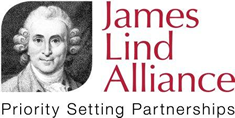Early Hip and Knee Osteoarthritis Top 10 priorities
Surgical Top 10:
- Taking cost into account what is the most effective treatment for early OA between surgical and non surgical treatments?
- What is the best way (content and structure) of delivering rehabilitation (physiotherapy) after surgery for early OA?
- What pre-operative factors can predict the outcome of surgery in people with early OA?
- In people with early OA are surgical treatments designed to repair, not replace the joint (such as stem cells, micro fracture and cartilage transplant) effective?
- In people with early OA does timing affect the outcome for non joint replacement surgery e.g. osteotomy, athroplasty?
- What are the most effective surgical treatments e.g. arthroscopic, biological, realignment, osteotomy in people with early OA?
- What is the best way of measuring outcomes (pain, function, quality of life, joint preservation) of non arthroplasty surgery with people with early OA?
- What is the best way of delivering care short and long term post surgery for early OA?
- In people with early OA is joint replacement appropriate and effective?
- In people with early OA do surgical procedures that involve cutting and re shaping bone (inc. realignment and osteotomy) work?
Non-surgical Top 10:
- Is regular exercise and physical activity effective at reducing disease progression?
- What are the most effective and cost effective non-surgical management options, including combinations of treatments to improve outcomes in people with early OA?
- For people with early OA, what are the most effective and cost effective exercise programmes for clinical improvement?
- Is it possible to influence the progression of OA by modifying identifiable risk factors?
- What options are available for OA self management and how effective are they?
- What is the most effective and cost effective physiotherapy for treating people with early OA?
- For people with early OA going to primary care what is the best and most cost effective and appropriate pain relief strategy?
- What new drug treatments are effective in treating people with early OA?
- What are the best treatments for people with early OA, who also have other musculoskeletal conditions (such as Rheumatoid Arthritis and back pain)?
- When does Body Mass Index (BMI) impact on the progression of early OA?
Top 10 priorities unrelated to surgical or non-surgical uncertainties:
- Can early OA be slowed down, reversed or cured?
- What standardised non-surgical integrated pathways for early OA improve patient outcomes and experience?
- What are the best interventions to keep people with early OA working?
- How can we predict disease progression in people with early OA of the knee/hip?
- What is the best multidisciplinary care model for effective management of OA in primary care?
- What factors and patterns of disease are responsible for progression of OA?
- Is timing of OA diagnosis important for disease progression and applying interventions/treatments?
- In people with early symptoms of OA, which diagnostic tests should be used?
- What tests are useful to monitor the progress of OA?
- Does the amount or type of joint abnormality seen in the early stages of OA have impact on outcome?
Document downloads
For full details of all of the questions identified by this PSP, please see the data sheet below. For more information about the final workshop, please download the final workshop report below.

